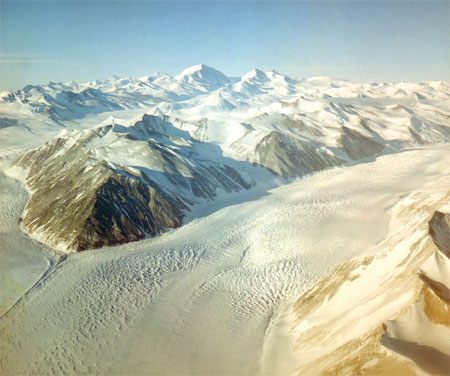Page 2/2 - Posted November 20, 2009
Documenting distributionDiana Wall “One of the things we need to know with climate change is how big the climate envelope is for a particular species,” explained Wall, entering her 20th season working in the Dry Valleys. “To know that kind of thing, we need to know the range of the different species.” For example, in collaboration with the New Zealand science program, scientists ventured as far north at Cape Hallet, about 400 kilometers from the northern edge of the Dry Valleys. An algae-feeding nematode at the more northerly location differed from one found in the Dry Valleys, Wall said. Climate changeMost climate change studies in Antarctica focus on the western ice sheet. If anything, the long-term trend in the McMurdo Dry Valleys, right on the edge of East Antarctica, has been slight cooling. However, a series of short-term flooding events in recent years has illustrated how quickly the system can respond to even minor changes. “If you turn that temperature gauge half a degree above freezing for a period of time, you generate a lot of water,” noted Berry Lyons “I think these are extremely sensitive systems, and slight increases in temperature in summer time really have a profound effect on how much water you generate,” added Lyons, who is also a co-principal investigator on the Beardmore team. His role will be to support the biological study by analyzing the geochemistry of the soils. “The chemistry is just an aid to better understand the habitat — the soil’s age and composition, how much nitrogen and carbon and how much salt,” he explained. “I think they’re probably going to look like a lot of the higher elevation soils we see in the Dry Valleys.” Going high and dryThat’s different from the floor of the Valleys, where moisture from streams, lakes and permafrost melt helps drive the activity, productivity and density of the organisms in the soil. Wall’s “worm herders” science team has found nematodes in up to 70 percent of the Dry Valley soils. In extremely dry soil areas, she said, only the nematode Scottnema lindsayae has the temerity to survive, remaining in an anhydrobiotic state, a sort of stasis where all metabolic activities cease and it loses up to 99 percent of its water content until moisture is available. It can remain that way indefinitely. “It’s the Rambo [of nematodes]. It’s a tough worm,” Wall noted. Added Adams, “We can find old soils that are dry and have these nematodes in them. We can add water to them and they come alive. We still don’t know the answer to the question about how old these things are and how long they can live in this state.” Some of those answers may be found where no one has looked — yet. NSF-funded research in this project: Byron Adams, Brigham Young University, Award No. 0840979 |



For USAP Participants |
For The Public |
For Researchers and EducatorsContact UsU.S. National Science FoundationOffice of Polar Programs Geosciences Directorate 2415 Eisenhower Avenue, Suite W7100 Alexandria, VA 22314 Sign up for the NSF Office of Polar Programs newsletter and events. Feedback Form |



